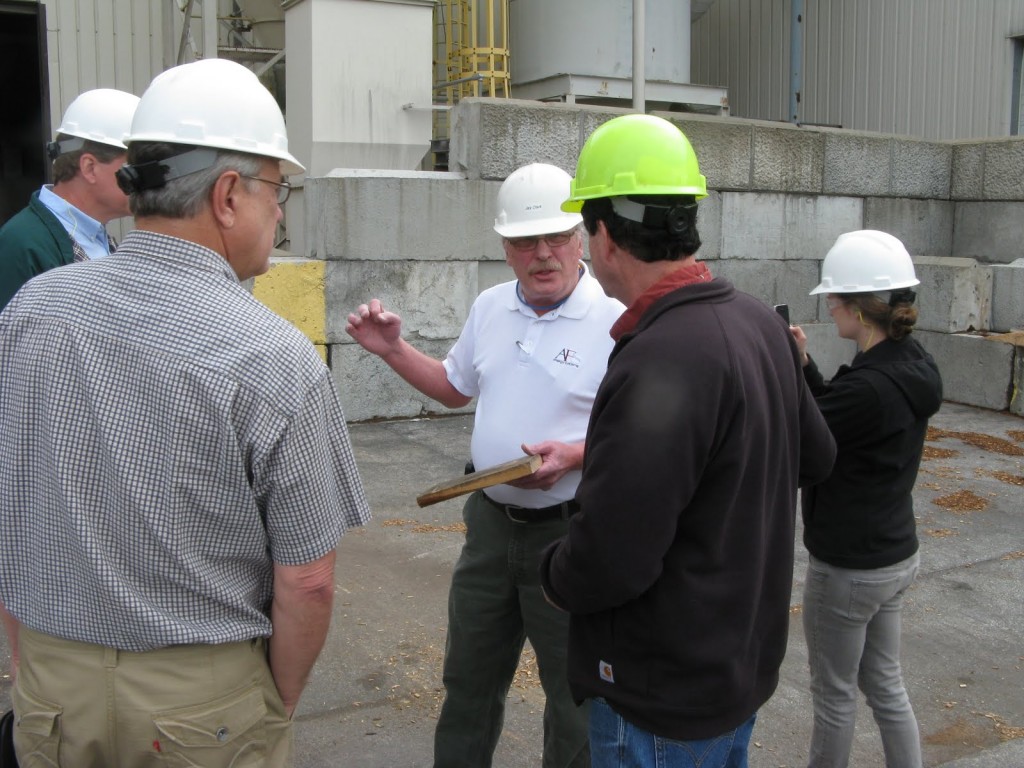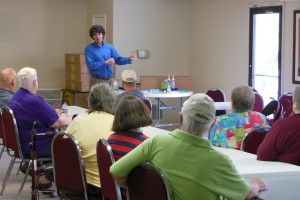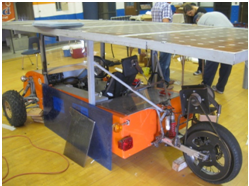Gary Musgrave is serving with Penn State Extension, Westmorland, and is studying market and pricing barriers in the bio-fuel industry. He writes:
We here at the Penn State Extension encourage the use of renewable resources. A part of that effort is to build partnerships between ourselves and those who are interested in implementing renewable resources and those who are already using renewable resources. One of the current system owners that we recently discovered is Gutchess Lumber in Latrobe, PA. I wrote an article for the Penn State Extension News that is mostly captured below. It was an interesting day for all involved. When you see biomass written, think wood chips. These wood chips are fresh from a right-of-way clearing contractor.

On Monday, April 29, 2013, Penn State Extension in Westmoreland County sponsored a field trip to a biomass heating operation at Gutchess Lumber’s Latrobe Pennsylvania Manufacturing Facilities. Hosted by Steve Wagner of Gutchess, it was attended by a group of energy and extension specialists from throughout the region. Jay Clark of AFS Energy Systems attended as the installer of the biomass boiler system, and the system’s operator, Emiliano Giacopetti, provided first-hand accounts of how the system works.
Gutchess is one of the largest wood kilning operations in the country, and uses renewable biomass combustion to heat 25 kilns that dry their various hardwood products. Kiln capacity consists of: more than five million board feet of computer controlled drying and more than one million board feet of pre-drier capacity. Steve related that depending on dimensions and specie, kiln time varies from about 10 days to about four months. Live steam is also applied at the end of the drying process to “condition” the wood to reduce warp and splitting. The biomass boilers consume about 30 tons of wood chips per day to produce about 215,000 pounds of steam. Chips are stored in two concrete silos that supply the fuel feed system’s sorting and transportation system. See silo below.

Locally generated waste wood is processed through a separate grinder prior to routing through the regular fuel feed system. The wood chips are blown into the boiler and combusted, producing heat that is used to make steam.

The combustion exhaust is filtered by a cyclonic separator to reduce emissions, and plans are in place to install an electrostatic precipitator to further reduce particulate levels. Note absence of smoke from the chimneys below.

The tour proved to be an eye opening example of how renewable biomass can provide cost effective heat for industrial applications. Steve and Emiliano seemed happy with their system and thus were eager to discuss it. There was no shortage of questions or answers and all the tour participants left the facility with a broader understanding of the biomass application. To top it off, it was a beautiful, dry spring day. Seems a good time was had by all!

For more information on biomass energy and upcoming extension events, visit www.energy.extension.psu.edu
 Gary Musgrave is a native of southwestern PA. A graduate of Carnegie Mellon University and The George Washington University, Gary spent ten years in the Army Corps of Engineers stationed in Virginia and Germany and then 28 years with the local electric utility. Most recently, he worked in Energy Efficiency and Conservation and found it interesting and particularly worthwhile since a conserved kilowatt-hour is best both for the environment and the wallet. He is presently assisting with the establishment of a biomass co-firing project at a nearby combined heat and power facility and improving the compensation of photo-voltaic system owners by pursuing capacity payments from the electric grid system operator.
Gary Musgrave is a native of southwestern PA. A graduate of Carnegie Mellon University and The George Washington University, Gary spent ten years in the Army Corps of Engineers stationed in Virginia and Germany and then 28 years with the local electric utility. Most recently, he worked in Energy Efficiency and Conservation and found it interesting and particularly worthwhile since a conserved kilowatt-hour is best both for the environment and the wallet. He is presently assisting with the establishment of a biomass co-firing project at a nearby combined heat and power facility and improving the compensation of photo-voltaic system owners by pursuing capacity payments from the electric grid system operator.










